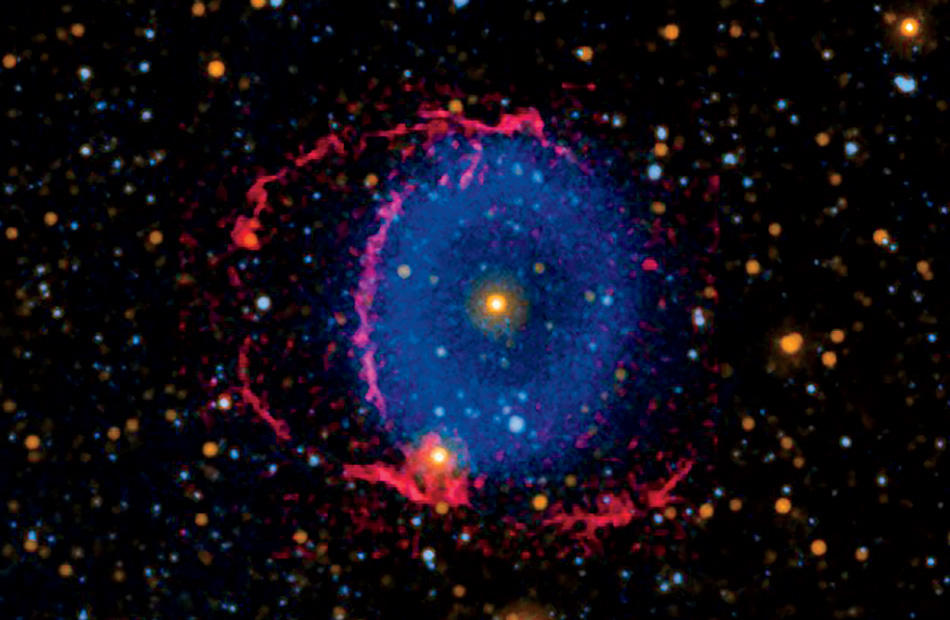For years, astronomers have been puzzled by a massive gas cloud, or nebula, that encircles a star some six thousand light-years away in the constellation Hercules.
Now Columbia astronomer Brian Metzger and colleagues at the California Institute of Technology say they can finally explain the origins of the “Blue-Ring Nebula,” so called because of its striking appearance when viewed through an ultraviolet telescope. In a paper in the journal Nature, the scientists posit that the nebula is the result of a collision between two stars, the larger of which engulfed its neighbor and remains visible amid the cataclysmic event’s gassy aftereffects.
“This finding not only explains a single mystery,” says Metzger. “It sheds new light on how such mergers occur, the impact they have on their large-scale environments, and the detailed properties of the final merged star.”



